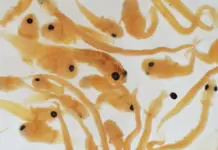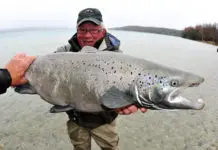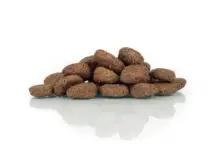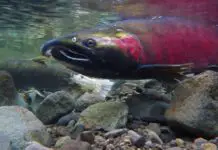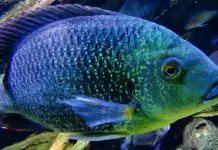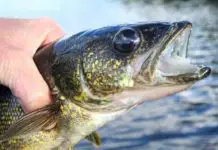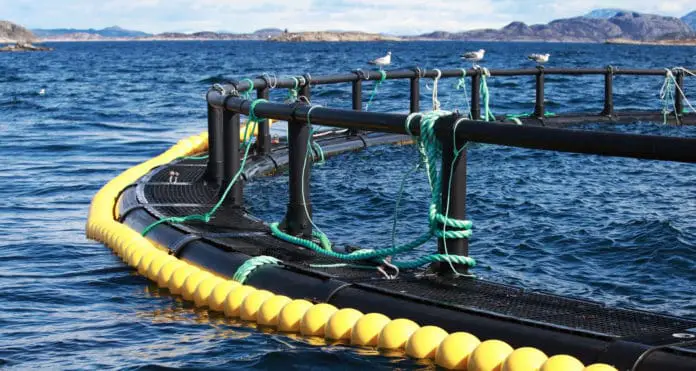
Canada: The often quoted comparison of nitrogen discharges from salmon farms with those from human settlements is questioned by an aquaculture scientist with inside industry information
When someone applies for new salmon farming sites in certain parts of the world, a lot of people and organizations get busy with the production of all kinds of material that is aimed at halting the proposed private use for profit of what is normally considered to be public property. The planned expansion of salmon farming by New Zealand’s King Salmon Company is no exception, but a government scientist with experience from the industry may shed some light on the facts of the situation and in the process reduce the overheated temperature of the debate. The long and short of it; salmon farm waste is rich in Nitrogen- human waste not so much. But farmed salmon don’t discharge most of the common pollutants coming from human settlements, making the comparison unpractical and unprofessional.
Dr. Andrew Forsythe of the National Institute of Water and Atmospheric (Niwa) is quoted in a recent article by the Marlborough Express;
Linking human waste to the discharge from fish farms was “flawed” and new salmon farms planned for the Marlborough Sounds would pose a minimal environmental risk, Niwa’s top aquaculture expert says. New Zealand King Salmon’s attempt to add nine new salmon farms to its existing five has drawn fire from environmental and community groups. Leading the charge is the new group Sustain Our Sounds, which has based much of its counter-argument on likening the amount of nitrogen discharge from farms producing the final target of 30,000 tonnes a year to what’s in the sewage of half a million people. It raises the possibility of too much nitrogen resulting in toxic “red tides” and dead zones.
But the National Institute of Water and Atmospheric Research’s Whangarei-based chief aquaculture scientist, Andrew Forsythe, told Fairfax NZ that human waste contained a lot of noxious materials other than nitrogen, in which it was relatively low, and that the proposed scale of salmon farming was of little risk. Sustain Our Sounds also argues little is known about the quality of the water in the Sounds other than around the farms, and that no further finfish farming should be allowed until a scientific baseline is established. However, Dr Forsythe said the Crown-owned research and consultancy company had done “a great deal of monitoring” in and around Pelorus Sound.
It had also done an exercise comparing human and other natural sources to fish farm discharge in a North Island setting and the result was that “the nitrogen is minor, and in a highly mixed situation you can’t detect it more than 100 metres from the farm”. The scientist, who previously worked in salmon farming and environmental science in Canada, said most of the nitrogen waste from fish in a well-managed aquaculture facility – “and you can apply that to virtually all New Zealand farmed fish aquaculture” – was not particles falling to the bottom, but liquid in the form of ammonia. It was dispersed and ultimately converted to phytoplankton.
New Zealand was producing a premium product for white-tablecloth restaurants around the world which sought sustainable, wholesome products. “We’re pushing a very New Zealand brand. You can stuff up the environment with any type of farming, we all know that, dirt farming or water farming, but it is not in King Salmon’s or any farmer’s interest in New Zealand to farm badly.” Dr Forsythe said Norway produces about 100 times as much salmon as New Zealand from about half the coastline length, and was “a highly developed society with very acute interest in the welfare of their environment”.
Niwa research general manager Rob Murdoch also said work had been done on nutrient levels in the Sounds, with no doubt that the predominant drivers of change were that was happening in the open ocean and river flows. “Cook Strait is a very heavily mixed area so it tends to be nutrient rich most of the time, and that water does come in and out of the Sounds,” Dr. Murdoch also said. “Overall I would have thought the nutrient dynamics are being driven by much bigger processes than from a salmon farm.” To imply that those small farms would impact on the entire nutrient dynamics of Queen Charlotte and Pelorus, if you looked at the volume statistics on their own, they wouldn’t back that up.”
























